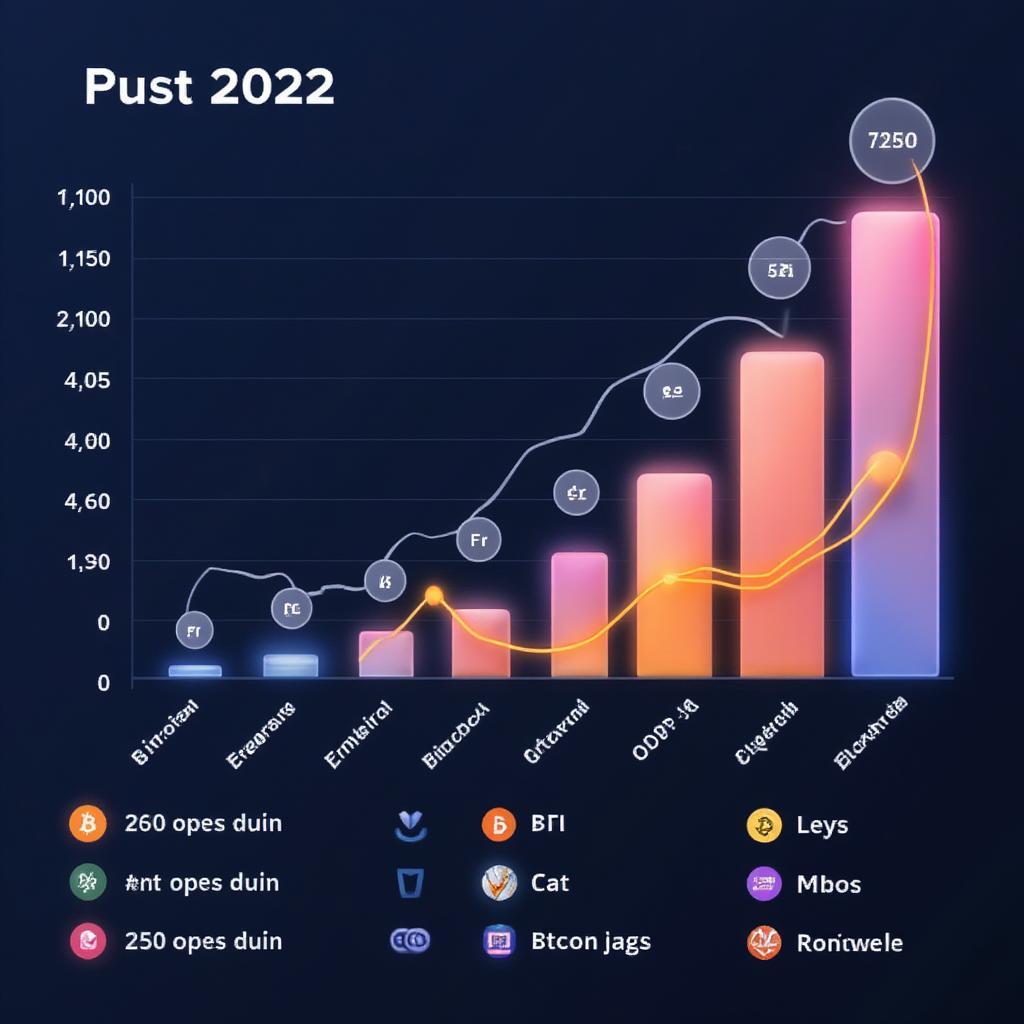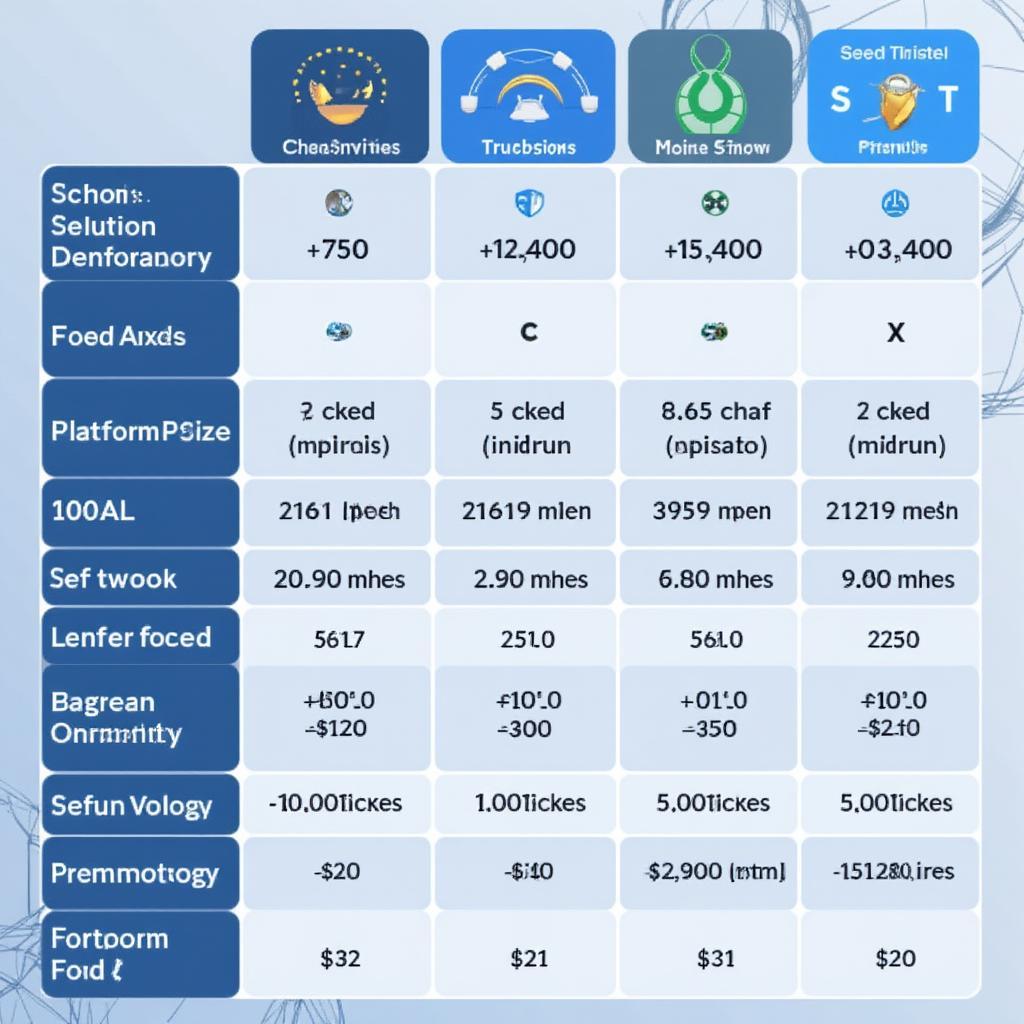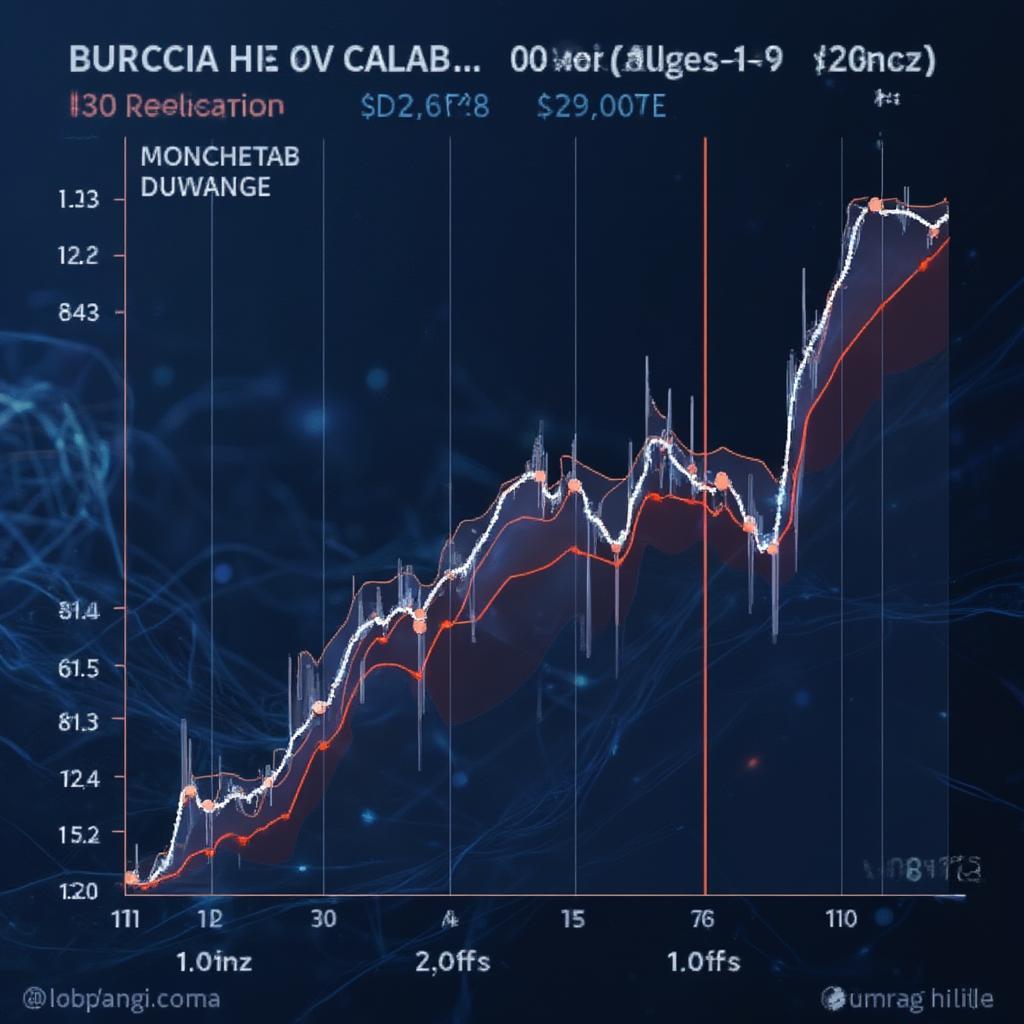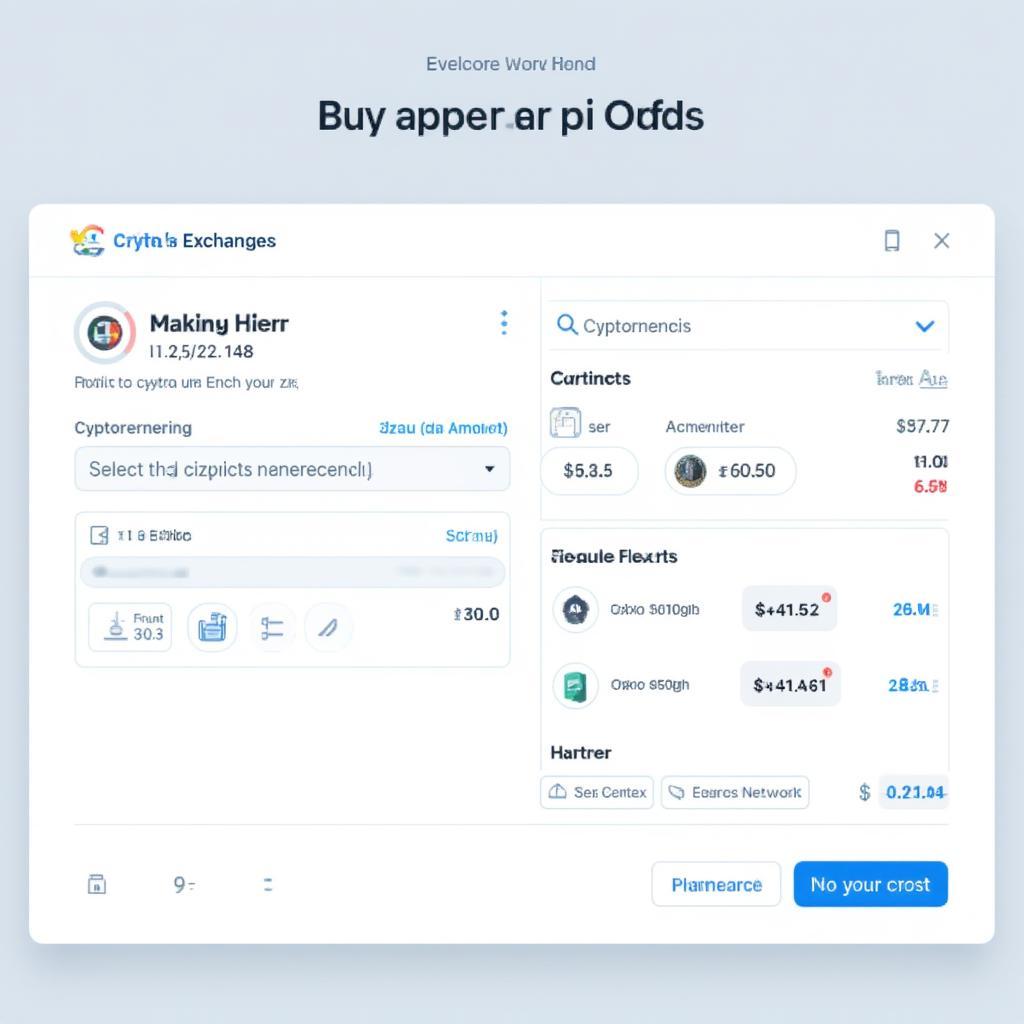Navigating the Storm: Understanding the Most Volatile Crypto Assets
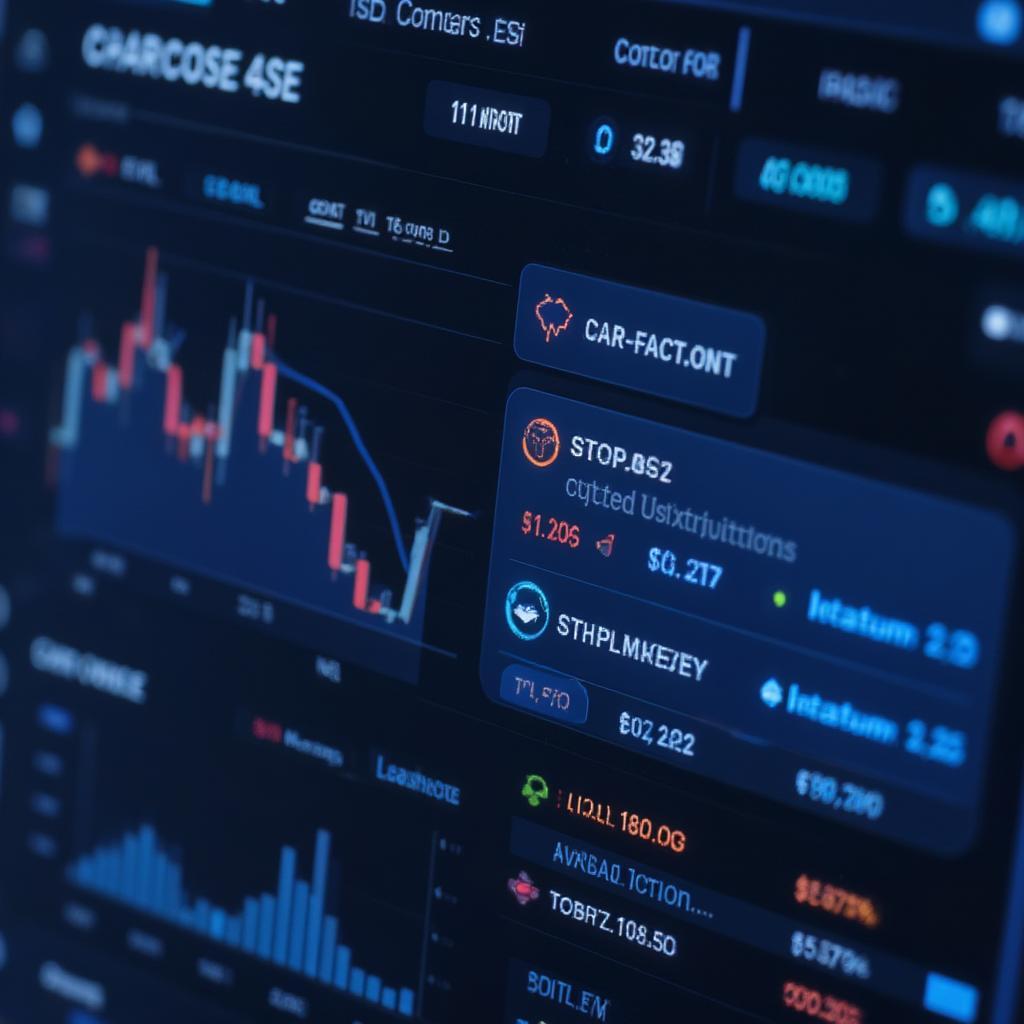
The cryptocurrency market is renowned for its wild swings, and identifying the most volatile crypto assets can be a crucial step for both seasoned traders and curious newcomers. Volatility, in this context, refers to the degree of price fluctuation of a cryptocurrency over time. These fluctuations, while risky, also present unique opportunities for profit. However, understanding the factors that contribute to this volatility is paramount to making informed investment decisions. This article will delve into the dynamics that make some cryptocurrencies more volatile than others, helping you navigate this often unpredictable landscape.
What Makes a Crypto Highly Volatile?
Several factors contribute to the price swings seen in the most volatile crypto assets. Unlike traditional stocks, the crypto market operates 24/7 and is often driven by sentiment and speculation rather than concrete financial data. These factors can create a rollercoaster effect, making some cryptos far more unpredictable than others.
Here are some key drivers of high volatility:
- Market Sentiment: News, rumors, and social media trends can heavily influence the price of a crypto. A tweet from a prominent figure or a negative news report can trigger rapid sell-offs or buying frenzies.
- Low Market Cap: Cryptocurrencies with smaller market capitalizations are generally more susceptible to price swings. A relatively small influx of capital can cause a significant price increase and vice-versa.
- Lack of Regulation: The absence of strict regulations means the crypto market is more vulnerable to manipulation and pump-and-dump schemes, leading to heightened volatility.
- Whale Activity: Large holders, often referred to as whales, can move the market significantly with their trades. Their actions can trigger a domino effect, causing sharp price movements.
- Technological Development: New technological advancements and upgrades within a crypto’s ecosystem can create both optimism and uncertainty, leading to price fluctuations as the market adjusts to new information.
- Global Economic Factors: Like all markets, cryptocurrencies are affected by global economic conditions. Interest rate changes, inflation, and political instability can all lead to increased volatility in the crypto market.
Identifying the Most Volatile Crypto: A Deeper Look
While identifying the most volatile crypto might seem like a hunt for the most unpredictable, there are patterns and characteristics to look for. Usually, the newer, less established coins tend to be more volatile, as they haven’t yet proven their use case or found their footing in the market. Coins with a lower market cap also generally exhibit greater volatility than those with large market caps, simply because less trading volume is needed to move the price.
“It’s important to understand that volatility isn’t inherently bad; it’s simply a feature of the crypto market. For traders, it can present opportunities, but for long-term investors, it’s essential to manage risk accordingly,” says Dr. Evelyn Reed, a financial analyst specializing in cryptocurrency markets.
Examples of Cryptocurrencies Known for Their Volatility
Several cryptocurrencies have gained a reputation for significant price swings. While no specific crypto will consistently remain the most volatile crypto, certain types often exhibit higher levels of unpredictability:
- Meme Coins: Cryptocurrencies like shib crypto are highly influenced by social media trends and community sentiment, making them extremely volatile. These coins often lack a solid fundamental basis and can experience dramatic price surges and crashes within short periods.
- New or Low Cap Altcoins: These coins, often launched with promises of innovative technology, can experience massive price spikes fueled by hype and speculation. However, they are also susceptible to rapid declines, especially if they fail to deliver on their promises.
- Decentralized Finance (DeFi) Tokens: While some DeFi projects offer real utility, they can be subject to large price fluctuations due to various market dynamics, and sometimes due to exploits or rug pulls, all of which can lead to high volatility.
How to Manage Volatility in Your Crypto Portfolio
The fluctuating nature of the most volatile crypto demands a strategic approach to risk management. Simply buying into the latest hyped coin is a recipe for potential disaster. Here are some strategies to consider:
-
Diversify Your Portfolio: Don’t put all your eggs in one basket. Diversify across different types of cryptocurrencies, including some with lower volatility and established market presence.
-
Invest What You Can Afford to Lose: The golden rule of crypto investing. Only invest capital you’re comfortable potentially losing.
-
Do Your Research: Before investing in any crypto, especially those with high volatility, thoroughly research their use case, whitepaper, and team, as well as any associated risk.
-
Use Risk Management Tools: Utilize tools like stop-loss orders to minimize potential losses. These tools can automatically sell your crypto if the price falls to a specific level.
-
Stay Informed but Avoid Herd Mentality: Keep up with market news, but don’t blindly follow trends. Analyze information critically and make your own informed decisions.
risk management for crypto trading
“Remember, it’s not about chasing the biggest gains, but about building a robust and sustainable portfolio that can weather market storms. This means understanding the inherent risks, and adjusting your strategies accordingly,” advises Benjamin Carter, a seasoned crypto trader and author of “Navigating the Crypto Tides.”
The Role of Speculation and Fear in Volatile Markets
The speculative nature of the crypto market cannot be understated. Fear of missing out (FOMO) and fear, uncertainty, and doubt (FUD) play significant roles in price movements. When there’s widespread FOMO, prices can surge rapidly, often detached from fundamental value, while FUD can trigger panic selling. Understanding these psychological forces can help you avoid making emotionally driven investment decisions. Remember, the market’s extreme ups and downs can greatly affect even the most stable of cryptos, and any coin can become the most volatile crypto under extreme market conditions.
Understanding the Implications of Trading Highly Volatile Assets
Trading in highly volatile cryptocurrencies is not for the faint of heart. It requires a sound understanding of technical analysis, risk management, and the psychological aspects of trading. These are not assets to invest your life savings into. The potential gains are high, but so are the losses. Be aware of scams, do not click on links in your emails, and use strong passwords for all your accounts. When trading in the most volatile crypto, you should use two factor authentication (2FA) for all your accounts.
Consider the example of shitcoins, which are a prime example of highly volatile assets. They frequently pump and dump, leaving those holding the bag with significant losses. This is a prime example of the inherent risk in the market. Remember, any coin can be prone to this volatility.
Future Trends Affecting Crypto Volatility
The future of crypto volatility is hard to predict, but several trends could affect it:
- Increased Institutional Adoption: As large institutional investors enter the market, the potential for manipulation decreases, though their trades can still significantly impact the price and volatility.
- Regulatory Clarity: Clear and effective regulation could reduce price volatility by promoting greater stability and investor confidence. This, however, has not been seen to this point, as stricter rules, especially with regards to upcoming cryptocurrency projects, has shown to add to volatility in the short run.
- Technological Advancements: Continued innovation in blockchain technology could reduce the unpredictability of cryptocurrency prices in the long term by providing more reliable, secure, and scalable solutions.
“While the market will likely remain volatile, the future should see a more mature and resilient ecosystem. The key is to adapt and evolve with the market,” states Maria Chen, a blockchain technology consultant.
Conclusion: Riding the Wave of Crypto Volatility
The most volatile crypto assets represent both a challenge and an opportunity. While their unpredictable nature can be daunting, understanding the factors that drive volatility and adopting sound risk management practices can allow you to navigate this market effectively. It’s essential to remember that the crypto market is still evolving, and remaining informed and adaptable is crucial to success. By being disciplined, researching thoroughly, and investing responsibly, you can manage your risk and potentially benefit from the inherent opportunities this dynamic market presents.
Frequently Asked Questions (FAQs) About Highly Volatile Cryptocurrencies
-
What exactly is cryptocurrency volatility? Cryptocurrency volatility refers to the degree of price change of a cryptocurrency over a specific period, usually expressed as percentage gain or loss. High volatility means large and sudden price swings, and low volatility means more stable prices.
-
Why are some cryptocurrencies more volatile than others? Factors like market sentiment, low market capitalization, lack of regulation, and the influence of large holders can make some cryptocurrencies more susceptible to price fluctuations than others.
-
Can a previously stable crypto become the most volatile crypto? Yes, any cryptocurrency, regardless of its previous stability, can become highly volatile due to market events, news, technological changes, or manipulation.
-
What are some examples of highly volatile cryptocurrencies? Meme coins, new or low cap altcoins, and some DeFi tokens are often more volatile than established cryptos like Bitcoin or Ethereum.
-
How can I manage the risks associated with highly volatile crypto? Diversify your portfolio, invest only what you can afford to lose, conduct thorough research, use stop-loss orders, and stay informed but avoid herd mentality.
-
Is high volatility always a bad thing in crypto? Not necessarily. While high volatility can lead to significant losses, it also presents opportunities for traders to profit from price fluctuations.
-
What role does market speculation play in crypto volatility? Speculation heavily influences crypto prices. FOMO and FUD can cause massive price surges and crashes, often detached from a crypto’s intrinsic value.
-
Will the crypto market always remain this volatile? While it is expected to remain volatile, increased institutional adoption, regulatory clarity, and technological advancements could lead to more stability in the long term. However, there is no real telling the impact of these changes as they happen.

